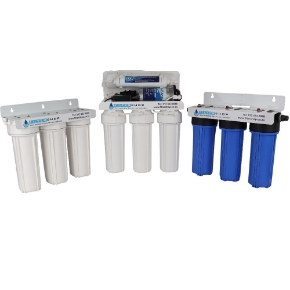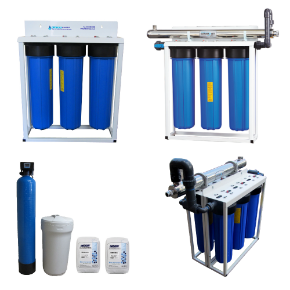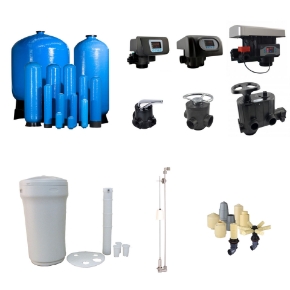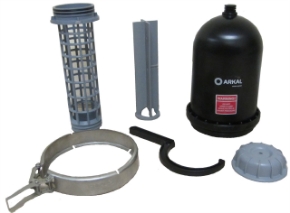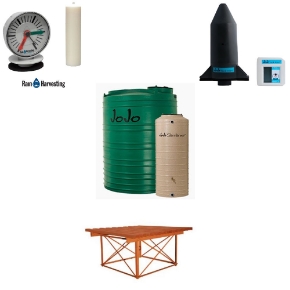Water Softeners
The Water softener is used to remove hardness (also known as calcium, lime, kalk) from the water.
How does the water Softener Work?
A water softener is an ion exchange system, which essentially means that it swaps one ion for another.
In the case of water softener, it exchanges the hardness ions (calcium & magnesium) for sodium ions.
The cation resin inside of the vessel is coated in sodium ions, as the water flows through the vessel the sodium ions exchange places with the hardness. So the hardness “sticks” to the cation resin inside of the vessel and the sodium ions continue on with the water.
/Water Softener Normal Daily Operation.jpg)
The water softener will then run regeneration cycle, where the hardness on the cation resin is flushed out of the unit, and the cation resin is then recoated with sodium ions.
Salt is used during the regeneration process as a source of sodium ions, to flush off the hardness and re-coat the resin. There is a misbelieve that water softeners add salt to the water, however, this is not the case.
A properly installed and functioning water softener should never make a water that does not already have a salty (brackish) taste suddenly taste salty.
/Water Softener Regeneration stage 1 Backwash.jpg)
/Water Softener Regeneration stage 2 Regen.jpg)
/Water Softener Regeneration stage 3 and 4 brine refill and fast rinse.jpg)
Softener in Operation
What size Softener should I get?
While the softener does have a liter per hour flow rating, this is only meant as a guide and is for situations where the Hardness level is 200ppm or lower. The fact is that all the water softeners can handle similar flow rates, the difference will be with the effectiveness of the hardness removal and the regularity of the regeneration cycles at higher flow rates.
- The larger the water softener vessel, the more cation resin it will contain, the larger the amount of time before the resin becomes saturated and requires regeneration.
- In situations with very high hardness (kalk/lime) levels, it is recommended to go with the largest of the water softeners. Otherwise, with the smaller water softeners, you will regenerate on a very regular basis. All the smaller amount of cation surface area in the small water softeners means fewer places from hardness to be captured and so it will reduce the effectiveness of the softener.
Included in the price:
- Fibre Glass vessel (25 Litre / 50 Litre / 75 Litre / 100 Litre)
- Rise pipe
- Strainers or laterals
- Manual / Automatic Softener Valve
- Resin
- 100 Litre Brine Tank
- PVC Pipe – 50mm (for attaching brine tank)
- Blacking tubing
- Salt
Not included in the price:
- Plumbing and installation costs
- Delivery costs (i.e. a courier service)
- Replacement filters
Please note that larger Softeners are available on request. Please contact us by email or phone to find out about larger water softeners.
How to install a water softener
How to program the Digital Automatic Valve Head
There are two models of Digital Automatic Valve Head we use with our water softener units, the F63B1 and F63B3.
Please find below some videos on programming these two valve heads.
Digital Softener Valve Head (Model F63B1)
PVC Threaded and Glue Fittings
PVC(Polyvinyl chloride) fittings are used to connect sections of pipes or tubes, adapt to different sizes or shapes, and controlling the flow of water. There are two predominant types of PVC fittings namely PVC Glue Fittings and PVC Threaded Fittings. The difference between the two is that PVC Glue Fittings result in permanent joints and PVC Threaded Fittings are semi-permanent and can be replaced. PVC Glue fittings are joined with primer and cement- a chemical solvent that melts the surface of the PVC and then quickly re-hardens to fuse the pieces together. This results in an airtight, leak-proof bond similar to what you get with welding metal. An example of such a fitting is a PVC Glue Reducing Socket which is used to join together two pieces of PVC pipes with different diameters. Another example would be a 90 Degree Elbow which is used to connect two pipes of the same diameter at an angle of 90 degrees.PVC Threaded fittings utilise a simple threaded connection whereby replaceable 'male threaded' are screwed into 'female threaded'.Male threads have a thread on the outside of the fitting and female threads have a thread on the inside. When you thread the fitting in, it compresses against the other threads.PTFE tape is used to thread these together and the proper way to assemble threaded fittings is to finger tighten, then add one to two turns but no more. An example of a threaded fitting is a Reducing Nipple Male Threaded which is used to connect between two female threads of different diameters.
Link To PVC Fittings












